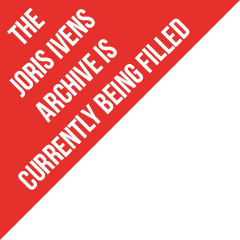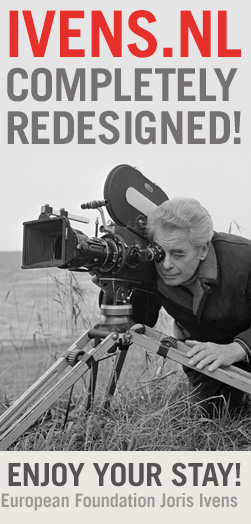

Name curator: Nicole BRENEZ
Name artist: Chaab MAHMOUD
Title of the work you have chosen: Grève sauvage (la genèse)
English title: Wildcat Strike (Genesis)
Year of production: 2009
Format: digital
English subtitles are available in You Tube! Please click on the subtitle screen in the right corner.
About the curator
Name: Nicole BRENEZ
Function: Professor, curator
What is your main interest: avant-garde film
Where do you come from/ where do you live: Paris, France
About the film and the filmmakers:
What can you tell about this film?
A video artist and VJ, or —as he would rather refer to himself— a "worker of the image," Chaab Mahmoud has directed numerous music videos and visual poems. Inspired by punk musical styles, his film work takes two main directions: the representation of people who are excluded, whether by choice or not; and the recycling of forgotten images. In both cases, the films share the fate of what society has marginalized: indeed, Chaab Mahmoud does not care in the least about the visibility of his own work. Among the films that may be associated with the first vein (the excluded) are Hard Drive (2009), a tribute to the company Pirate Bay, and Sans Correspondance ("Without Connection," 2009), an empathetic description of the homeless who populate the Parisian subway, a condition Mahmoud himself experienced during the 1990s. The second category (recycling) includes a series of "visual symphonies" made of found footage as well as Chant Sauvage: le Ménestrel. Préambule à toute histoire possible du cinéma ("Wild Song: The Minstrel. Preamble to Any Possible History of Cinema," 2007). Adapted from a poem by the young Karl Marx, Chant sauvage is a manifesto against dominant images and a call to reconsider the history of cinema from the point of view of the filmmakers who accompanied liberation struggles in the twentieth century (from the workers' struggles in France and the Spanish Civil War to the occupation of Iraq today). His Communiqué de presse ("Press Release") —made in 2009 for the collective project Outrage & Rebellion, to which Mahmoud was one of the main contributors— marked the beginning of a series of animated films devoted to the horrific Doktor Jabuse. In 2009, I suggested to Chaab to make a visual adaptation of Raoul Vaneigem's De la grève sauvage à l’autogestion généralisée ("From Wildcat Strike to Generalized Self-Administration"). Thanks to Erick Marais, we met Raoul Vaneigem in Paris, and Raoul immediately understood what kind of person was Chaab: a pure free spirit, wildly independent, and coming from the real — in his case, from Syria and from various addictions. Raoul gave us his permission, and Chaab did all by himself all the cinetic work: he shot many landscapes all over Europa, made the music, the editing, the post-production. As the idea was to spread Raoul Vaneigem’s amazing manifesto, a classic of subversion, as widely as possible, I asked to the great Australian filmcritic Adrian Martin to translate the excerpts I choose in English for free, and Adrian kindly accepted.
When Chaab disappeared, in May 2014, he was still working on the long version of the film. I hope one day his son, Zack, who was his assistant in the film, will one day complete the film.
Chaab’s work has notably been shown at the Cinémathèque Française, Paris Tout Court festival, Musée du Louvre, and Cinéma du Réel (Centre Pompidou, Paris).
How does this film relate to the theme ‘politics and poetry’ in your opinion?
I will borrow his words to the Argentinian filmmaker and martyre Raymundo Gleyzer (from an Interview in Australia, 1974) :
"We – the filmmakers - must serve as the stone which breaks silence, or the bullet which starts the battle.” It was pure coincidence, but Chaab used the image of a window broken by a bullet as the symbol of his production company, “CombatProd”. For Chaab, as for Peter Whitehead to whom he devoted a short documentary, poetry is the alpha and the omega of life, and true politics is to infuse poetry everywhere in and in-between the phenomenon. In such a perspective, poetry refers to this action allying freedom and beauty, that can take and invent many literary or visual forms, but that helps us to drink a new energy to the sources of spirit, even in the darkest and most tragic circumstances, as Primo Levi remembering Dante in Auschwitz.
Are politics and poetry (or politics and arts) two separate worlds according to you? Why / why not?
Of course, every film is political, in the sense that it is ideological. But in the sense of an affirmative fight, there is a need to Found Aesthetics Anew Out of the Political. A political position consists to act positively according to your own postulates about the phenomenons, whatever they are – avoiding any ideological prejudices and pre-conceptions. It is as easy to think as exceptional to find in cinema.
Inspired by the French revolutionary events in 1789, the German poet Friedrich Schiller, one of the leading thinkers on the role of art towards the emancipation, magnificently defined beauty as the refusal of subordination to an external order, seeing it as a plenitude transcending regularity. As a manifestation of a glorious autonomy, the work of art introduces the observing individual to a moral emancipation: the individual sees, thanks to the work of art, how beauty is delivered from all constraints and is nurtured solely by freedom. Thus, he understands what it means to “gradually actualize all of one’s potentialities” (Letter upon the aesthetical education of Man, 1794.) If the work of art’s primary territory is that of the conscience or the work of faculties, its challenge consists of continuously reconfiguring the symbolic, to question the division between art and life, such as the humiliating division between the ideal and reality, for example. For a artist, art only has sense in its refusal, in its contesting, its pulverization of the limits of the symbolic; it exists as an end within itself or as a means of directly intervening in the real. This is my definition of political art.
A bias (quite useful for refusing to consider a work) would rather a socially engaged cinema be caught up in the material urgencies of history, while remaining indifferent to aesthetic issues. This is a piteously decorative conception of formal exigencies and considerations, since, on the contrary, the cinema of intervention solely exists to pose fundamental cinematographic questions: why make an image, which one and how? With and for whom? Be it an image of an event (the death of a man, a war, a massacre, a fight, an encounter…), how to edit it, and decide in which context and perspective to place it? To which other images does it confront? Under history’s gaze, which are the missing images and which will be the indispensable ones? Who possesses the right of speech, and how to reclaim this right if we are refused it? Why or in other words, what history do we want?
There are a lot of political tensions and changes in the world right now. Do you (already) notice any changes in the focus and/or ideas and work of artists because of these developments? Do you have examples?
We are now living as citizen in a world abandoned to a capitalist and neoliberal explosion after 1989, without any political perspective other than a resistance maintained at every step of the way, inch by inch, but without the possibility of a collective counter-attack – and this, until 2011, the start of the revolutionary blossoming, or the Arab Spring — that until now, had political benefits only in Tunisia. Throughout these interminable decades, political writing has gone through the reconfiguration of relationships between nature and man (Raymonde Carasco & Régis Hébraud, Peter Hutton, James Benning, Lech Kowalski, Philippe Cote, Lucien Castaing-Taylor & Verena Paravel…), reconsideration of relationships between individuals and collective history (Jean-Luc Godard, Akram Zaatari, Wang Bing, Robert Fenz, Florence Lazar, Mounir Fatmi…), transmission and remembrance of struggles (John Gianvito, Travis Wilkerson, Clarisse Hahn, Susanna de Sousa Dias, Hu Jie…) and of course, daily recording of battles on the ground —military or social struggles (Anand Patwardhan, Lionel Soukaz, Florent Marcie, Anne-Laure de Franssu and Mory Coulibaly, Ing K…). A large part of critical energy has been devoted to the analysis of representations, now become the main ground for the battle of images (harun Farocki, Tony Cokes, Jayce Salloum, William E. Jones, Bani Khoshnoudi, Marylène Negro, Jean-Gabriel Périot…). For me, a great filmmaker considers each phenomenon (whether an entity or connecting link) not as a universe, but as a multiverse.
Besides the theme of ‘Politics and poetry’ are there any other comparisons between this artist and Ivens according to you?
In 1932, Joris Ivens gave a lecture about « The Artistic Power of Documentary Film ». I think Chaab would have agreed with all Iven’s statemements about film as movement, invention of rhythms, and combative honesty towards the real.
